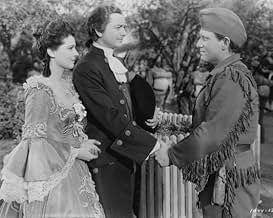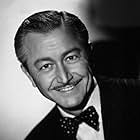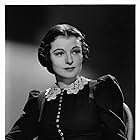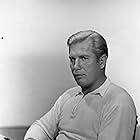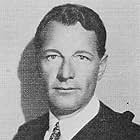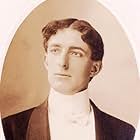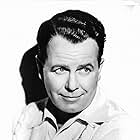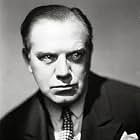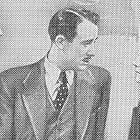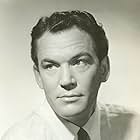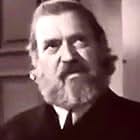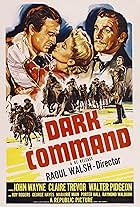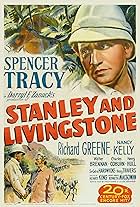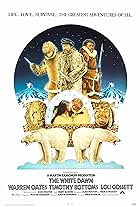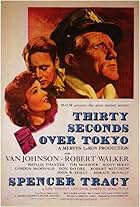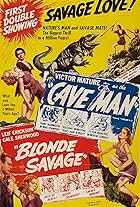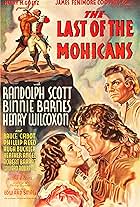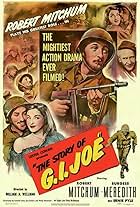IMDb RATING
7.0/10
4K
YOUR RATING
Langdon Towne and Hunk Marriner join Major Rogers' Rangers as they wipe out an Indian village. They set out for Fort Wentworth, but when they arrive they find no soldiers and none of the sup... Read allLangdon Towne and Hunk Marriner join Major Rogers' Rangers as they wipe out an Indian village. They set out for Fort Wentworth, but when they arrive they find no soldiers and none of the supplies they expected.Langdon Towne and Hunk Marriner join Major Rogers' Rangers as they wipe out an Indian village. They set out for Fort Wentworth, but when they arrive they find no soldiers and none of the supplies they expected.
- Nominated for 1 Oscar
- 1 nomination total
Donald MacBride
- Sgt. McNott
- (as Donald McBride)
C.E. Anderson
- Ranger
- (uncredited)
Storyline
Did you know
- TriviaAccording to historical accounts, 204 Rogers' Rangers left for St. Francis and 100 survived to return home.
- GoofsRogers' Rangers did not portage their whaleboats over a ridge during the St. Francis raid. This actually happened two years prior when the Rangers portaged their boats from Lake George to Wood Creek in order to avoid French outposts around Fort Ticonderoga (Carillon).
- Quotes
[repeated line]
Maj. Robert Rogers: I'll see you at sundown, Harvard.
- ConnectionsFeatured in Land of Liberty (1939)
- SoundtracksAmerica, My Country Tis of Thee
(1832) (uncredited)
Music by Lowell Mason, based on the Music by Henry Carey from "God Save the King" (1744)
In the score during the opening credits
Reprised in the score near the end
Featured review
There are few films about the French and Indian War (1754 - 1763) which is surprising. Given the rising solidity of Anglo-American relations in the late 1930s into World War II more films should have been made. I can only think of this one and THE LAST OF THE MOHICANS (with Randolph Scott and Henry Wilcoxen) as the best - possibly sole - examples. But NORTHWEST PASSAGE is a marvelous example of how to make an interesting historical film. Briefly, it is 1759, and Major Robert Rogers and his famous Rangers (probably America's first example of a special forces unit) are sent into territory in the hands of an enemy Indian group. The film shows all the problems of 18th Century forest fighting, with supply problems, ambushes, and personal problems. Rogers does not have to only worry about Indian attacks (off screen we hear of the massacre of part of his men who separated for security reasons to rendezvous at a later spot), but with starvation and madness (witness Addison Richards insane ranger). But the mission is accomplished, and one step brought forward to the successful completion of the war.
But the story was not fully told, due to the expenses of filming (it was filmed mostly outside the studio). The actual title is NORTHWEST PASSAGE: PART I. Robert Young plays Langdon, a young college student (actually he looks slightly old for that role) who is skillful in drawing and drafting. So he is taken under Major Rogers' wing (Langdon and his best friend - played by Walter Brennan - were almost arrested for quasi-seditious remarks about a local British government official played by Montague Love) and go on the trek. Tracy/Rogers needs Young/Langdon as a map maker. He has plans to find the Northwest Passage with his Rangers once the war is finished. The present film ends with Langdon married and watching Rogers and his Rangers marching off on their next mission.
The sequel would have been a downer, but a brilliant one - and I suspect the subject matter of the sequel had more to do with killing the problem than the actual expense (after all, the first part was a hit film, and made back it's cost at the box office). In the sequel Rogers tries to get his exploration plans under way, only to run afoul of history: it seems the colonies and Britain are becoming less and less friendly due to the issue of taxation and British legislation like the Stamp Act and the Townshend Acts. Rogers (as he was an officer - albeit an irregular one - in the British army) is a loyalist, and Langdon and his friends are not. Gradually Rogers becomes more and more isolated due to his political stand. In the end he goes into exile, and becomes a bitter, defeated ex-hero. The Northwest Passage is not to be discovered by this remarkable man. It would be first sited by Thomas Simpson, an explorer for the Hudson Bay Company, in 1838-39.
The ill-fated Franklin Expedition (1845-49) would find the key to the passage, but perish in the course of the discovery. This would not fully become notable until Sir Robert McClure (in 1851) and Sir Leopold McClintock (in 1859) rediscovered the passage while seeking Franklin's men. Finally Roald Amundson would successfully sail through the passage on the Gjoa in 1903-1905.
The sequel, as you can see, became increasingly anti-British (the audience in America would have to be pro-American if shown in America). Therefore it would have been out of place in a period when American films were to be pro-English. That's more likely the reason that the sequel was not made with Tracy being shown going slowly to seed. An understandable reason, but it would have been Tracy's greatest part - the hero denied his just claim for glory by sheer historical chance. The completed NORTHWEST PASSAGE would have been one of the masterworks of 20th Century motion picture making.
But the story was not fully told, due to the expenses of filming (it was filmed mostly outside the studio). The actual title is NORTHWEST PASSAGE: PART I. Robert Young plays Langdon, a young college student (actually he looks slightly old for that role) who is skillful in drawing and drafting. So he is taken under Major Rogers' wing (Langdon and his best friend - played by Walter Brennan - were almost arrested for quasi-seditious remarks about a local British government official played by Montague Love) and go on the trek. Tracy/Rogers needs Young/Langdon as a map maker. He has plans to find the Northwest Passage with his Rangers once the war is finished. The present film ends with Langdon married and watching Rogers and his Rangers marching off on their next mission.
The sequel would have been a downer, but a brilliant one - and I suspect the subject matter of the sequel had more to do with killing the problem than the actual expense (after all, the first part was a hit film, and made back it's cost at the box office). In the sequel Rogers tries to get his exploration plans under way, only to run afoul of history: it seems the colonies and Britain are becoming less and less friendly due to the issue of taxation and British legislation like the Stamp Act and the Townshend Acts. Rogers (as he was an officer - albeit an irregular one - in the British army) is a loyalist, and Langdon and his friends are not. Gradually Rogers becomes more and more isolated due to his political stand. In the end he goes into exile, and becomes a bitter, defeated ex-hero. The Northwest Passage is not to be discovered by this remarkable man. It would be first sited by Thomas Simpson, an explorer for the Hudson Bay Company, in 1838-39.
The ill-fated Franklin Expedition (1845-49) would find the key to the passage, but perish in the course of the discovery. This would not fully become notable until Sir Robert McClure (in 1851) and Sir Leopold McClintock (in 1859) rediscovered the passage while seeking Franklin's men. Finally Roald Amundson would successfully sail through the passage on the Gjoa in 1903-1905.
The sequel, as you can see, became increasingly anti-British (the audience in America would have to be pro-American if shown in America). Therefore it would have been out of place in a period when American films were to be pro-English. That's more likely the reason that the sequel was not made with Tracy being shown going slowly to seed. An understandable reason, but it would have been Tracy's greatest part - the hero denied his just claim for glory by sheer historical chance. The completed NORTHWEST PASSAGE would have been one of the masterworks of 20th Century motion picture making.
- theowinthrop
- Nov 12, 2004
- Permalink
Details
Box office
- Budget
- $2,677,762 (estimated)
- Runtime2 hours 6 minutes
- Color
- Aspect ratio
- 1.37 : 1
Contribute to this page
Suggest an edit or add missing content





